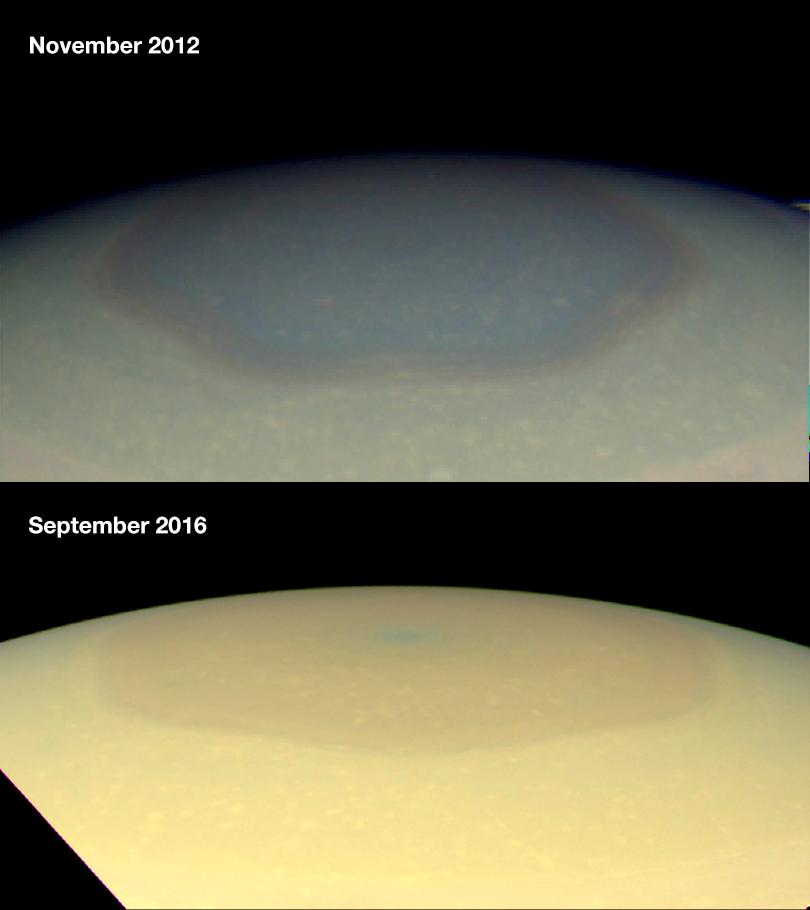Like the rest of the planet, the atmosphere of Saturn is made up approximately 75% hydrogen and 25% helium, with trace amounts of other substances like water ice and methane.
From a distance, in visible light, Saturn’s atmosphere looks more boring than Jupiter; Saturn has cloud bands in its atmosphere, but they’re pale orange and faded. This orange color is because Saturn has more sulfur in its atmosphere. In addition to the sulfur in Saturn’s upper atmosphere, there are also quantities of nitrogen and oxygen. These atoms mix together into complex molecules we have here on Earth; you might know it as “smog”. Under different wavelengths of light, like the color-enhanced images returned by NASA’s Cassini spacecraft, Saturn’s atmosphere looks much more spectacular.
Saturn has some of the fastest winds in the Solar System. As NASA’s Voyager spacecraft was approaching Saturn, it clocked winds going as fast as 1800 km/hour at the planet’s equator. Large white storms can form within the bands that circle the planet, but unlike Jupiter, these storms only last a few months and are absorbed into the atmosphere again.
The part of Saturn that was can see is the visible cloud deck. The clouds are made of ammonia, and sit about 100 km below the top of Saturn’s troposphere (the tropopause), where temperatures dip down to -250 degrees C. Below this upper cloud deck is a lower cloud deck made of ammonium hydrosulphide clouds, located about 170 km below. Here the temperature is only -70 degrees C. The lowest cloud deck is made of water clouds, and located about 130 km below the tropopause. Temperatures here are 0 degrees; the freezing point of water.
Below the cloud decks pressures and temperatures increase with depth, and the hydrogen gas slowly changes to liquid. And below that, the helium forms a liquid as well.
We have written many articles about Saturn for Universe Today. Here’s an article about long-term patterns in Saturn’s atmosphere, and here’s an article about Saturn’s southern atmosphere.
Want more information on Saturn? Here’s a link to Hubblesite’s News Releases about Saturn, and here’s NASA’s Solar System Exploration Guide.
We have recorded a podcast just about Saturn for Astronomy Cast. Click here and listen to Episode 59: Saturn.
References:
NASA APOD
NASA Saturn Fun Facts

